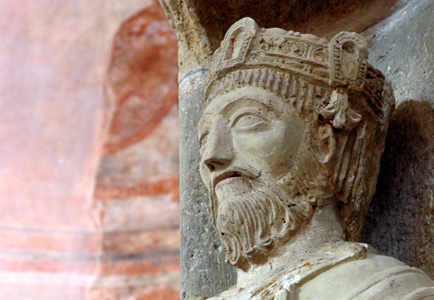
Barbarossa made Charlemagne a saint
Charlemagne based his rule on the spread of Christianity and the focus of faith on the Roman Church. Faith and politics were inseparably connected. After Charlemagne's death, a process of mythification began that transfigured him not only into an ideal model of an earthly ruler but also into a saint.
In the year 1000, Emperor Otto III had the tomb of Charlemagne opened. Eye witnesses reported that they had found Charlemagne's undecayed body sitting with a book of the gospels opened in his lap. Of course, these reports were not intended as documentation of an actual event. They seem to have been made in preparation for Charlemagne's canonisation, which failed to take place due to the untimely death of Otto III. He was finally accorded sainthood under Emperor Friedrich Barbarossa in 1165.
Sculpture, probably 12th century
St. Johann Monastery, Müstair (CH)
Charlemagne the Saint
"Charles cherished with the greatest fervour and devotion the principles of the Christian religion, which had been instilled into him from infancy. Hence it was that he built the beautiful basilica at Aix-la-Chapelle, which he adorned with gold and silver and lamps, and with rails and doors of solid brass..."
(from Einhard, The Life of Charlemagne, written circa 840)


